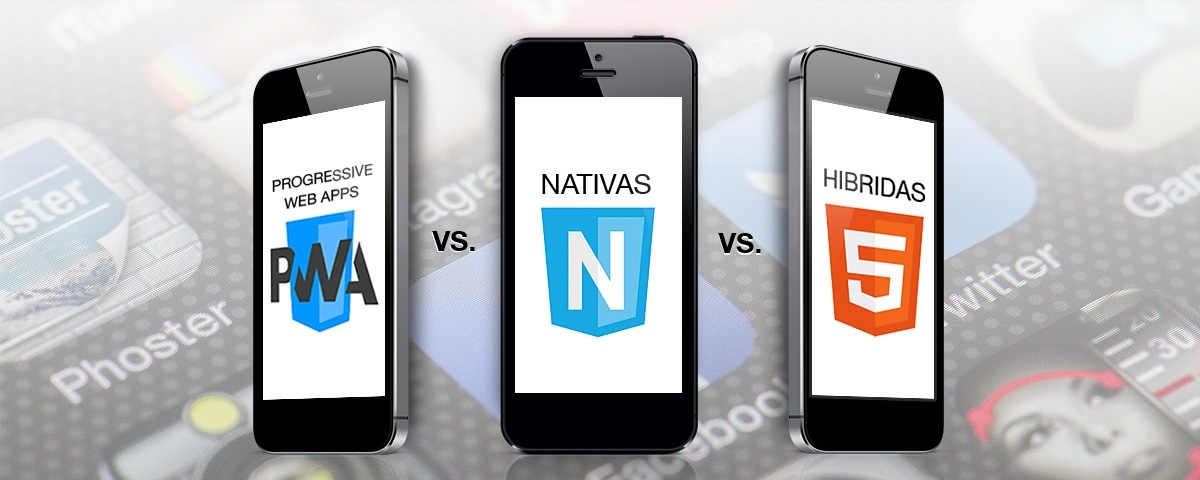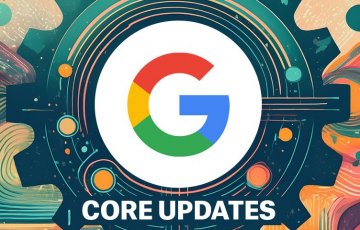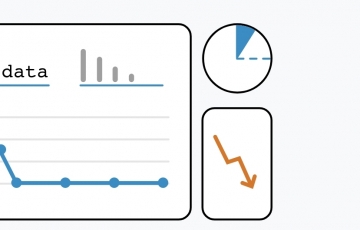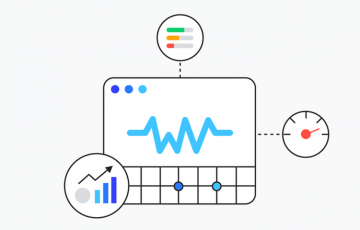Native Apps or Hybrid Apps or Progressive Web Apps?
Android + iOS = React Native. Futurible PWA (Progressive Web Apps)

Hello! What's going on?
Now that you are almost certainly reading this post from your mobile, you probably have never thought about the development behind most of the Apps you have installed on your device, both tablet and mobile.
I guarantee that it is an exciting world that for sure, gives us to write a post or more than one. For now we start with this one to know the basics of the App universe. As you know, at BAB we are passionate about any technological topic, but this one especially because it affects us directly due to the fact that speed and fluidity in the delivery of content is a key factor for our customers.
Most of them have digital publishing projects where the recognition and recurrence by users is based on the consumption of information from mobile devices and therefore in one way or another, are subject to the fact that this pattern of behavior is from a native App or a hybrid App, regardless of the iOS / Android platform or the type of device from which they connect.
In addition, a new technology called PWA (Progressive Web Apps) has recently appeared that will mark a before and after in the Apps sector, although at BAB we have not adopted this technology since Apple does not accept them yet.
We start by understanding what is a native App developed by iOS, i.e. the native operating system for Apple devices and a native App developed for Android, which is the operating system created by Google and used by all other devices on the market regardless of the manufacturer, except for other more residual systems such as Windows Phone, developed by Microsoft and currently only installed as standard on Nokia and Microsoft devices.
Understanding the basic differences between these two mobile platforms will help us understand why the natural and logical evolution of native Apps towards hybrid Apps and its most advanced exponent which is React Native, a 100% mobile programming framework, released in 2015 by Facebook who created and developed it to apply to its own App and also to Instagram. This technology represents a substantial saving in development time and costs and therefore a reduction in the TTM (Time To Market) and the implementation of MVP (Minimum Viable Product) versions.
What are the main features, pros and cons of native Apps for iOS and Android?

Native Apps developed for iOS:
- Object oriented programming language: Objective-C
- You work with code editors that include all iOS requirements: Xcode
- Once the developer completes his work, he compiles it into a file: Build
- The developer decides to publish on the App Store: Build
- Once you upload it, you decide in which status: Beta Testing or Release
- Your work needs to be validated by Apple: iTunes Connect
- Apple's validation criteria: Design standards, usability, content, etc.
- Once validated by Apple, it is published: Beta (Test Flight) or App Store (Release)

Native Apps developed for Android:
- Object Oriented Programming Language: Java
- Work with code editors that include all Android requirements: Android Studio
- Once the developer finishes his work, he compiles it into an Apk file
- Developer decides to publish the App on Google Play Console: Testing (Alpha / Beta) Completed (Release)
- Your work must be validated by: Google Play Console
- Google validation criteria: Content
- Once validated by Google it is published: Play Store

Pros of iOS / Android native Apps:
- Maximum device performance without restrictions (camera, altimeter, GPS...)
- Increased user experience and better response to actions.
- Availability in the App Store / Play Store
- Push notifications
- Constant updates available

Cons of native iOS / Android Apps:
- Know two different programming languages: Objective-C / Java
- Slow learning curve in constant recycling of knowledge
- Requires two different iOS / Android profiles
- Higher development time
- Increases TTM (Time to Market) and production of MVP (Minimum Viable Product) versions.
- Different functionalities for each platform
And what are the main characteristics of hybrid Apps?

Main characteristics of hybrid Apps:
- Technology to convert JavaScript code into native code
- Developed with web programming languages: HTML5 / CSS / JavaScript
- They run the same code regardless of iOS / Android platform.
- Accept iOS / Android native code injection or integration.
- They can access the hardware resources of the mobile devices: camera, GPS, altimeter...
Hybrid Apps are built on frameworks or structures designed for the implementation and development of an application, in order to separately manage data, actions, and how it is finally displayed. These frameworks are responsible for converting HTML5 / CSS / JavaScript web languages into native iOS / Android code.
And what are the most popular frameworks for developing hybrid Apps?

Apache Cordova (2011)
100% mobile framework
Uses web languages and can encapsulate HTML5 / CSS / JavaScript depending on the iOS / Android platform
Can use all the hardware of the device (camera, GPS, altimeter...)

Ionic (2013)
Built on Google's proprietary Angular
Allows to test the development of the App in Chrome
Thanks to PhoneGap and Cordova you can access all the hardware of the device (camera, GPS, altimeter...)
Apps from Diesel and McDonald's are developed with Ionic

React Native (2015)
Built on React and directly on JavaScript.
Created by Facebook and released as Open Source with usage policy, offers different and adapted components for iOS / Android
Allows to test development from a mobile device and an emulator
Facebook and Instagram Apps are developed with React Native
And what is the best framework to develop Apps for digital newspapers?
Nowadays the best framework to develop high performance hybrid Apps for digital newspapers is React Native. The optimization of the code and the response of the device to the content download time must be instantaneous, hence the perfect integration with Google's AMP (Accelerated Mobile Pages) for the delivery of content at maximum speed.

At BAB we develop iOS / Android hybrid Apps for our clients with this technology, because we think it is versatile, robust and allows us to make changes and updates in the Apps in an agile way, since it is not necessary to compile the code after each change according to the needs of the moment and typology of each editorial project. As it is not a WebView, i.e. a system component with technology that allows hybrid Apps to display embedded web content, but a code that runs with the JavaScript engine, the performance of React Native is far superior to that of a hybrid App developed with Apache Cordova or Ionic.
An added advantage is the fact that we can inject native code to add extra features, such as One Signal, an advanced push notification service essential to communicate to your users the latest news and that allows you to have control of delivery metrics, opening... basic for any digital media that needs to know the performance of loyalty strategies with users.
On the other hand, being a code released by Facebook, it has a huge developer community behind it and if there are any doubts or updates we know where to consult.
In the iOS / Android stores you can see examples of Apps that BAB has developed with React Native.
If your publishing project needs an App, do not hesitate to contact us and we will find a solution tailored to your needs.
If you liked the content, you can share this post on social networks and 1 like will also encourage us to continue... it's free and you know that the best things in life always are.... ?
If you want to suggest a topic that adds value to the day to day of your editorial project you can do it here and if you want to subscribe to our newsletter, just leave a name and an email in the field below, and you will receive the news of our blog before anyone else.
We'll continue talking about what we like the most. Will you be there?
See you soon!
And finally, did you know...
The future of Apps oriented to content delivery and consumption is Google's WPA (Progressive Web Apps). They aim to improve the user experience by combining the best of the web and Apps, as they will be available to users from the first visit in a browser tab, do not require installation and as the user browses, compiles cached pages visited and content delivery at full speed even offline ... we hope Apple accepts them.





